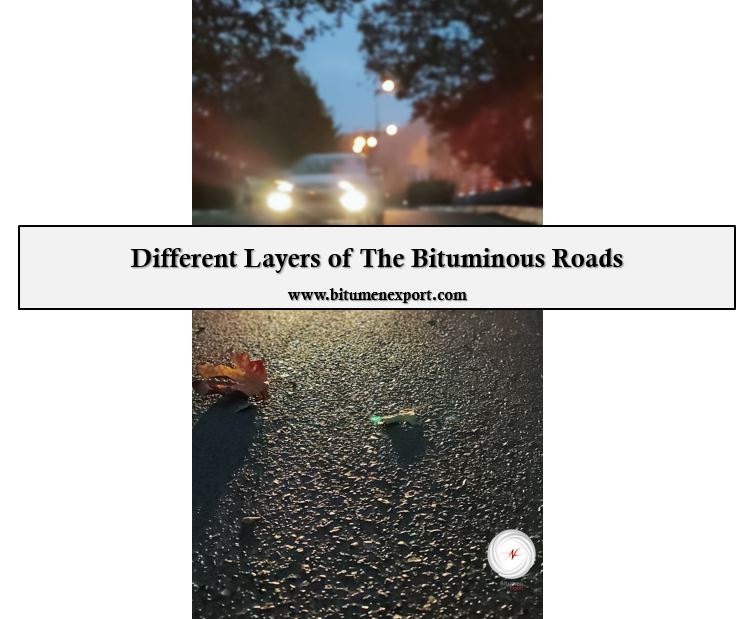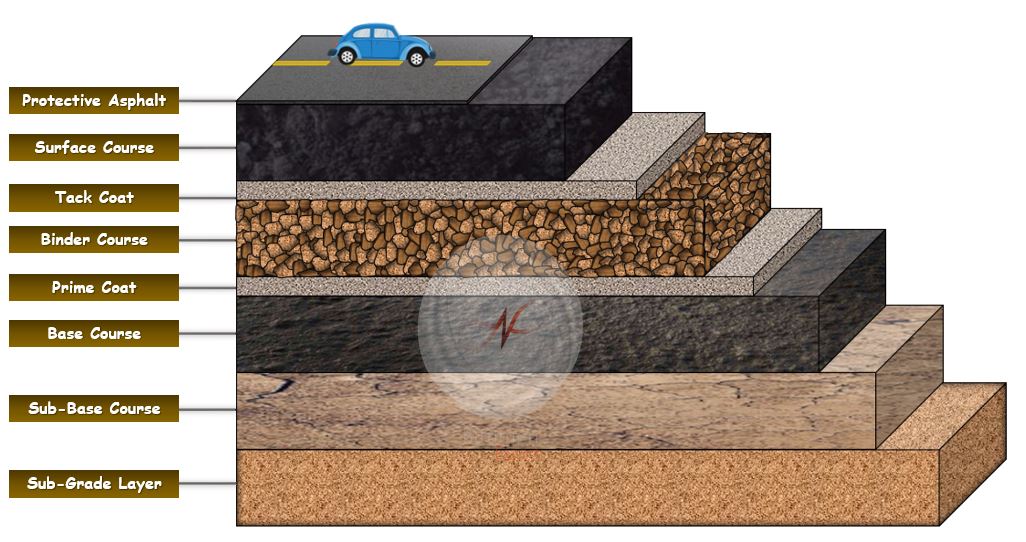Different Layers of the bituminous Road

. .
The road we walk, drive or ride on consists of different layers. Here we aim to analyze these layers, which are under the surface of the road, but we can’t see them. Therefore, different layers of the bituminous road are the issue we are going to address.
Generally, we divide Road pavements into two groups; Flexible and Rigid pavements. Unlike rigid pavements, flexible ones can include bitumen in different forms with different viscosity and penetration. This type of pavement contains two groups of layers; the main layer and the sub-layer. The main layers are the surface course, binder
course, base course, and sub-base course. Also, we have another layer under these courses, which is not known as the main one. It is the sub-grade layer at the end, and other layers are placed on it. On the other hand, we have some sub-layers. To explain more, we use these layers between the main ones to make them stick together. They can include the tack coat and prime coat.
To understand better, we have summarized their explanation in the photo below.

In fact, “the bituminous road” includes four different layers. We call them by this name because there is bitumen in their layers which is in contact with aggregates or other materials.
There is another layer that is put on the top. We name it “protective asphalt”, which protects the surface course from any damages that threaten the surface, like changing the climate and heavy traffic.
Now it is time to describe each of the layers mentioned above.
Protective Asphalt:
Some of its advantages are:
– Maintaining the road from damage
– Dressing the road surface to make it homogenize
– Making the road surface impermeable
– Increasing the strength
– Increasing the durability
– Some examples of this pavement are seal coat, slurry seal, chip seal, and micro-surfacing.
Surface Course:
It is the last layer in road construction on which protective asphalt, lines, markings, and traffic signs are applied. The surface course is the layer we see and walk or drive on. It has finer aggregates than other layers.
Notation: We can use all the bitumen emulsion’s anionic and cationic grades in this layer.
Binder Course:
An intermediate layer between the surface and base course is the binder course.
The goal of constructing this layer is to distribute loads of traffic or upper layers to the base course. In addition, it can attach to the surface course and base course by tack coat and prime coat, respectively. Furthermore, the binder layer has the role of supporting the surface layer and does not allow it to move, shake, or shift. Not only the bitumen in this layer is not as high as the surface course but also, most of the time, it has less bitumen content.
* It is possible to include VG20, VG30, and VG40 in this layer.
Base Course:
This is another bituminous layer that is placed under the surface course. Mainly it contains gravel, stones, and sand stuck together with bitumen. Some kinds of aggregates in this layer are mountain gravel, riverbed rock, and macadam. The primary purpose of this layer is to transfer and distribute the load, pressure, tension, and stresses from the upper layer to the lower layer, which are the sub-base course and sub-grade layer. The base course attaches to the binder course by the prime coat.
Another feature of this layer is its higher permeability than the Sub-base course.
Sub-base Course:
This is a mix of aggregates that are under the base course. The aggregates might be grains, gravel, and crushed form.
Sub-grade Course:
The sub-grade layer is in the lowest part of the layers, which we can consider a part of the ground. The layers, we discussed previously, are located on it.

Therefore, these were different layers of the bituminous road which we discussed briefly for you.
You dear readers, please contact us if you need more information about price, quality, grades, etc.
. .
